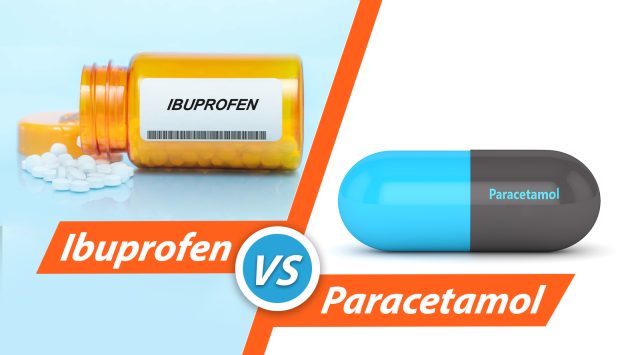Introduction
So, you’ve got a pounding headache. Maybe a fever too. You reach into the medicine cabinet and see two familiar names: Panadol and Brufen. The question pops into your head—can I take them together?
Panadol (which is paracetamol) and Brufen (aka ibuprofen) are like household friends. Most people keep at least one around. They work differently, but both help with pain and fever. A lot of people assume more is better. Two must be stronger than one, right? Well, maybe. Maybe not. Depends.
In this guide, we’re walking through everything you need to know. How they work. When it’s safe to mix them. What could go wrong. And who should steer clear.
Let’s break it down. Story-style.
How Do They Work in the Body?
Panadol – The Quiet Fixer
Panadol doesn’t scream. It works quietly, behind the scenes. Blocks pain signals. Tells the brain, “Hey, it’s not that bad.” Helps control body temperature too. But—it’s not an anti-inflammatory. So if there’s swelling, it won’t do much.
Brufen – The Inflammation Fighter
Brufen is louder. It goes right to the source of inflammation. Sports injury? Swollen ankle? This is your guy. It blocks the enzymes that trigger pain and swelling—COX-1 and COX-2. Also lowers fever. Pretty handy.
Can You Take Them Together?
Yes. Sometimes. Often, actually.
When Doctors Say “Go Ahead”
Let’s say someone gets their wisdom tooth pulled. The dentist says, “Take Panadol and Brufen—alternating.” Why? Because one handles the pain. The other, the swelling. Together, they work better.
It’s common. Doctors use this method in surgeries, injuries, high fever cases. It’s not just guesswork. Medical guidelines back it up.
What the Guidelines Say
Groups like the NHS, WHO, and NICE? They all give a thumbs up—if used right. Not forever. Not recklessly. But yes, you can combine paracetamol and ibuprofen together safely.
Dosing: Don’t Guess. Just Follow.
For Adults
- Paracetamol: 500–1000 mg every 4–6 hours. Max 4000 mg/day.
- Ibuprofen: 200–400 mg every 6–8 hours. Max 1200 mg/day without doctor.
You can:
- Take both together—for strong pain.
- Take them spaced—alternate every 3–4 hours. Keeps the effect going.
For Kids (Very Important!)
- Dosing depends on weight and age.
- Panadol: Okay for babies 2+ months old.
- Ibuprofen: Use if baby is 6+ months.
Use the syringe. Not a kitchen spoon.
When This Combo Is Useful
Let’s picture some real-life stuff:
- Fever at 102°F, not going down? Try both.
- You twisted your ankle? Brufen reduces swelling. Panadol calms the pain.
- Dental surgery? Ouch. You’ll probably get both.
- Knee arthritis? Brufen helps inflammation. Panadol makes it bearable.
It’s like using both a cold pack and a painkiller. Works better.
Side Effects: Let’s Be Honest
Panadol
Safe. Really. But go over the limit? Liver gets hit. Hard.
Brufen
Great for inflammation. But—can mess with your stomach. Can irritate your gut. Long-term use = ulcers. Also not kind to kidneys.
Together?
Used right—no big deal. Overdo it? You could get:
- Stomach bleeding
- Liver damage
- Kidney stress
So yeah, don’t just pop pills like candy.
Watch Out for These Combos
Avoid these when taking Panadol and Brufen:
- Alcohol (especially with paracetamol—bad mix)
- Other NSAIDs (don’t double up with aspirin or naproxen)
- Blood thinners (ibuprofen might increase bleeding risk)
- Cold/flu meds (they might already have these drugs!)
Check labels. Every. Single. Time.
Special Populations: Extra Caution
Children
Don’t guess. Call your pediatrician. They’ll guide you.
Seniors
Their kidneys? More fragile. Stomachs too. Panadol is usually safer here.
Liver, Kidney, Stomach Issues?
- Liver problems? Go easy on paracetamol.
- Kidney issues? Ibuprofen might not be the best choice.
- Ulcers or GERD? Ibuprofen can worsen it.
Self-Medication Tips
If you’re treating yourself:
- Short term only—2 to 3 days max without advice
- Never exceed the max dose
- Don’t combine with other unknown meds
- If it’s not working—stop and get checked
Symptoms lasting more than 3 days? Call your doc.
A Quick Story
Ali, 35, had shoulder surgery. The doc told him: “Take Panadol at 8am. Brufen at 11am. Then alternate.” Pain stayed manageable. No opioids needed. That’s how it works when done right.
What the Science Says
Not just hearsay. Real research:
- One study found better pain control when both were used vs one alone
- Hospitals often use the combo after surgeries
- NHS and WHO say it’s safe, if managed properly
FAQ Corner
- Can I take Panadol and Brufen together?
Yes, if you follow dosage and timing. Works better for some types of pain.
- Are there risks?
If taken correctly—not really. Overuse is where the problems start.
- How far apart should I take them?
You can stagger them by 3–4 hours to keep steady relief.
- Safe for children?
Yes, but under a doctor’s watch and correct dosing.
- What about older adults?
Generally okay. But ibuprofen should be used with care.
- Can I take them on an empty stomach?
Paracetamol—yes. Ibuprofen—better with food.
- Helpful for COVID or flu?
They manage symptoms. Won’t cure the virus. But yes, they help.
- What if I overdose?
Don’t wait. Go to the ER. Especially if it’s paracetamol.
- Can I drive?
Yep. These don’t make you drowsy.
- Natural options?
Sure—ginger, turmeric, ice packs. But they’re slow. Sometimes you need meds.
Final Word
So—can you take paracetamol and ibuprofen together?
Yes, you can. Safely. If you’re smart about it. Short-term pain, tough fevers, inflamed injuries—they’re all times when the combo helps. Just don’t wing it.
When in doubt? Ask your doctor. Seriously. It’s always better to double-check than to regret.











